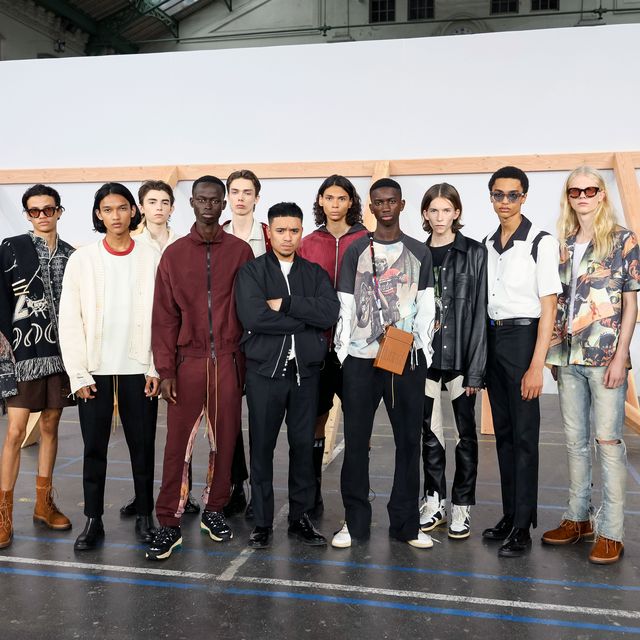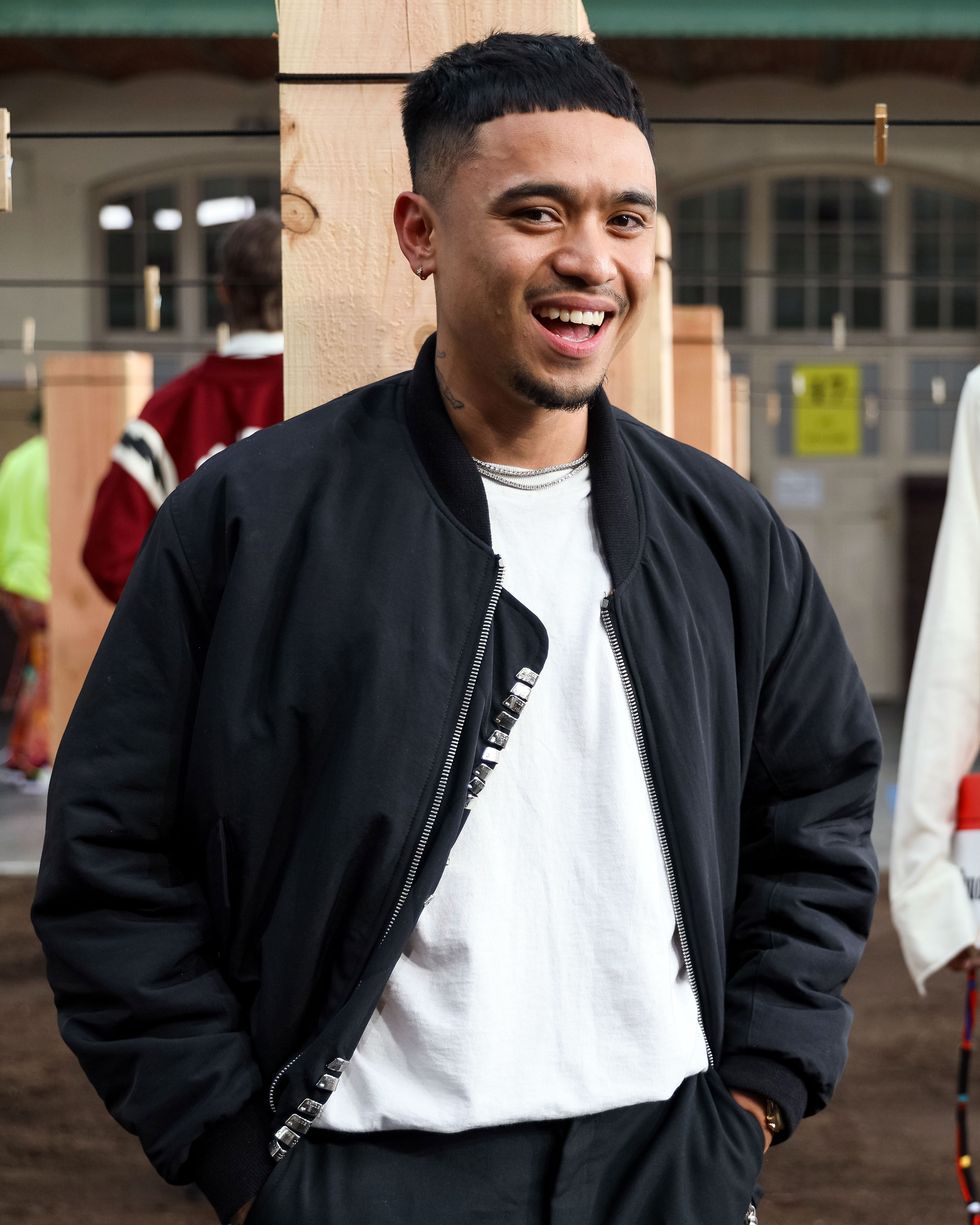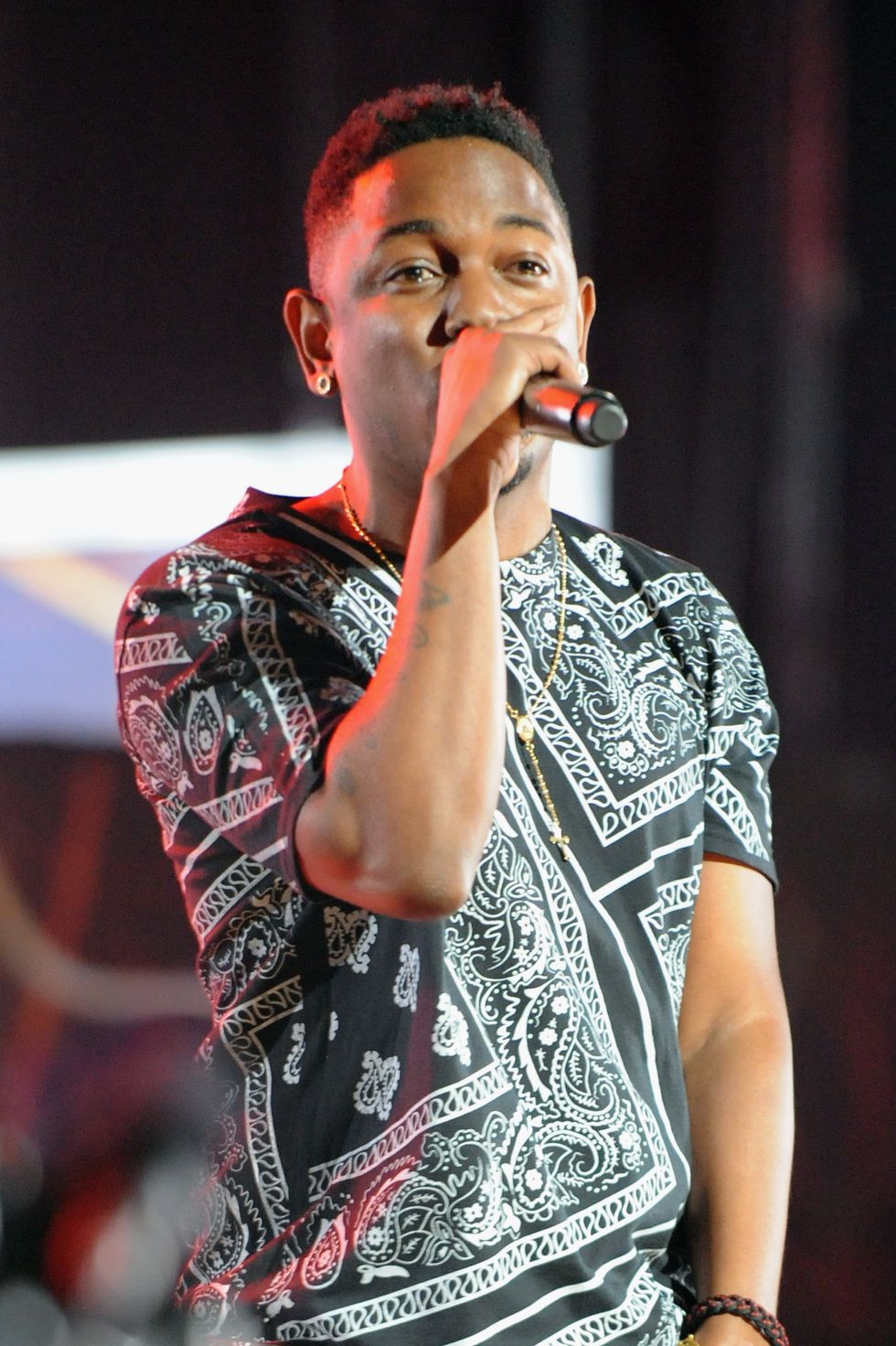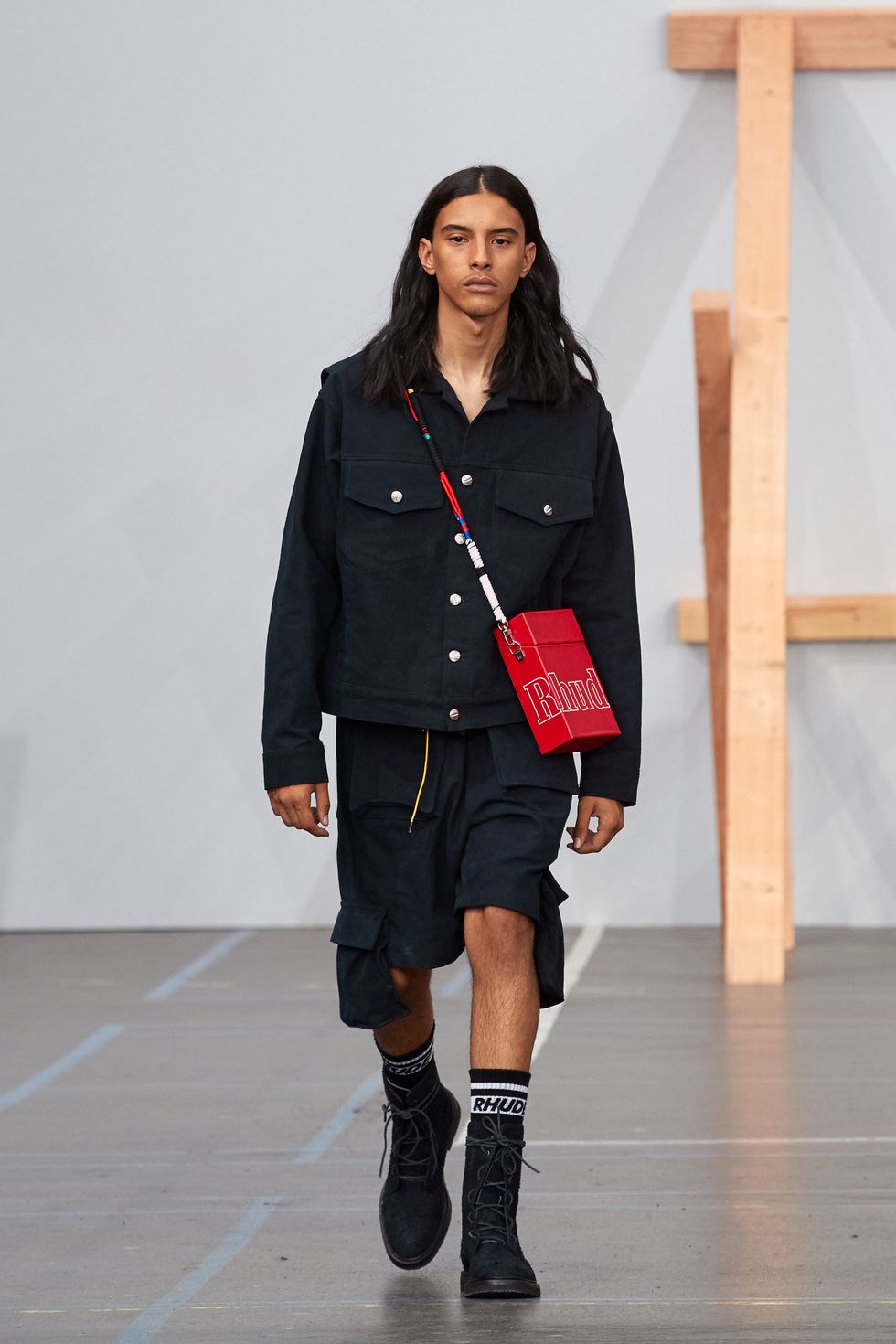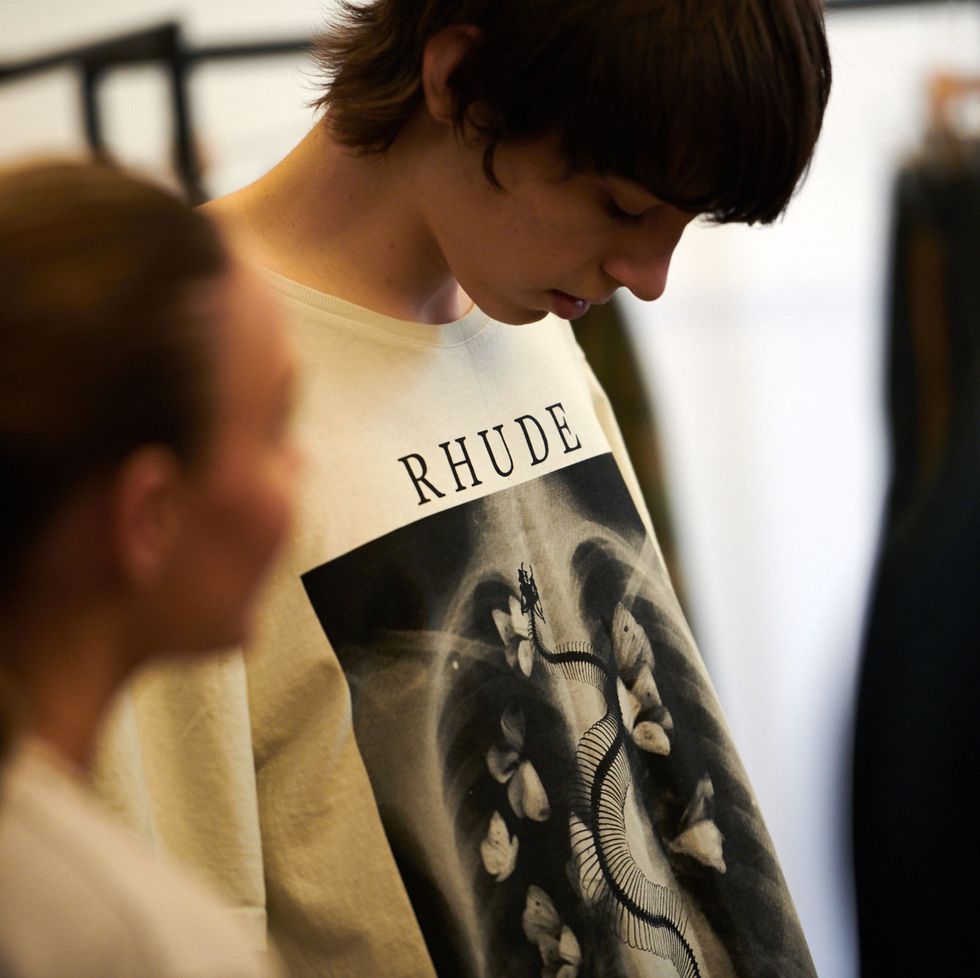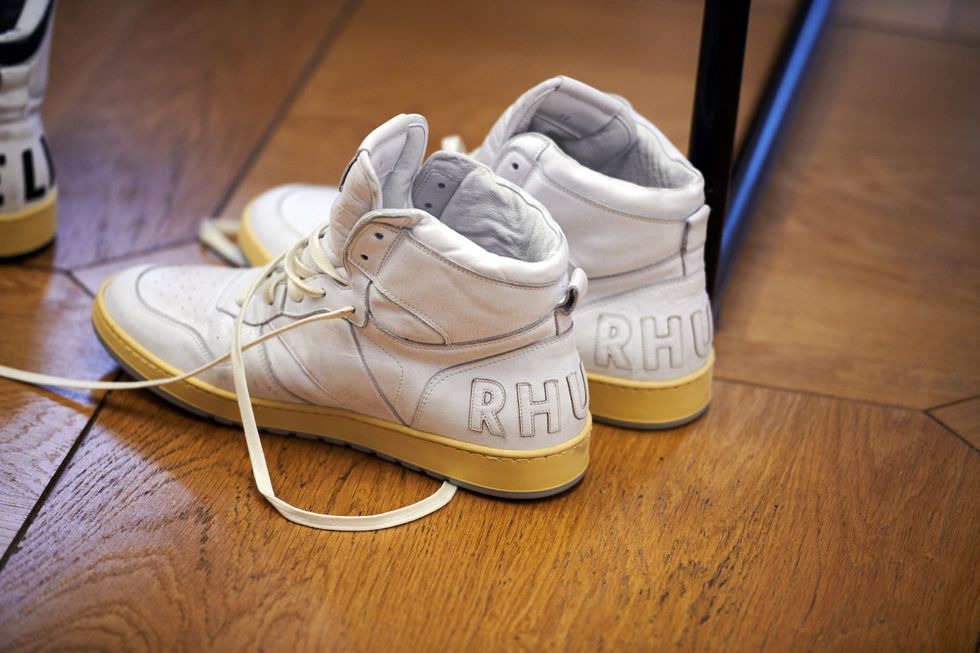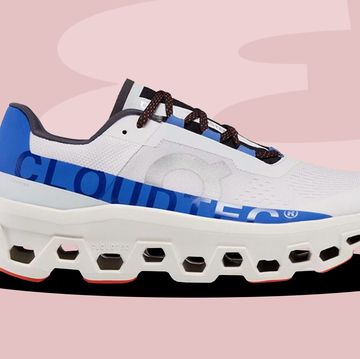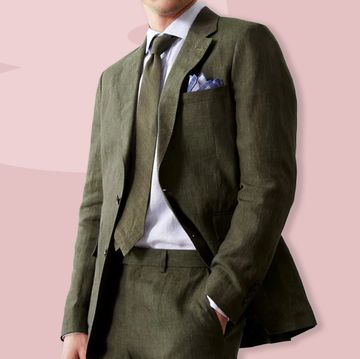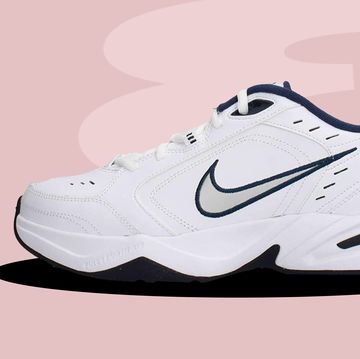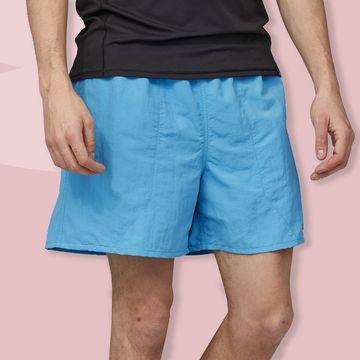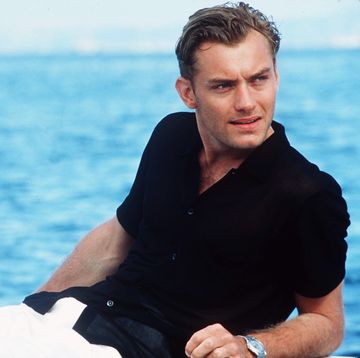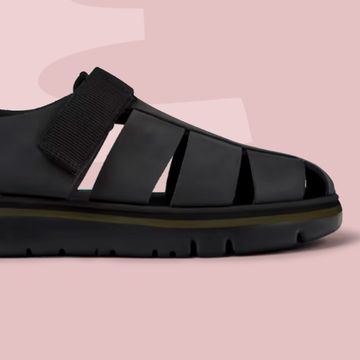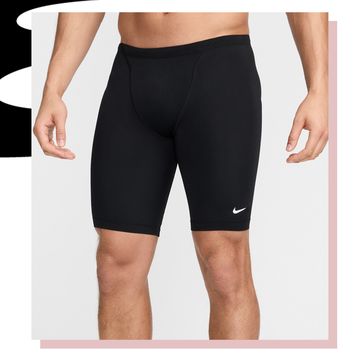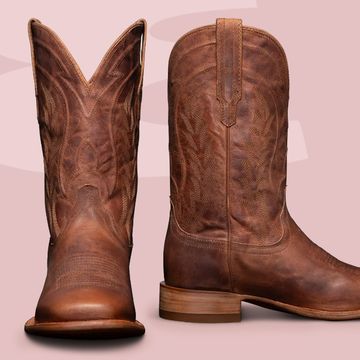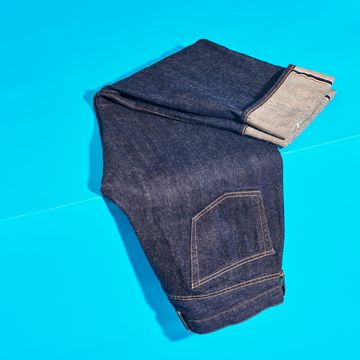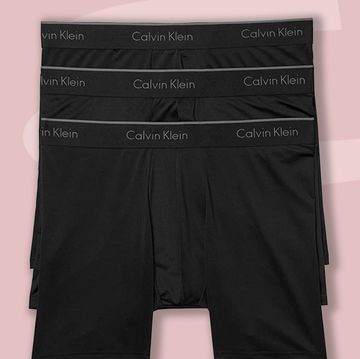The latest collection from streetwear-slash-luxury brand Rhude is, on one hand, directly inspired by a spot in Colorado called Seven Falls. Designer Rhuigi Villaseñor came across a vintage flier for the park, which features (you guessed it) seven waterfalls, and became fascinated by the idea of playing with the double meaning of “falls.” As it happens, that’s exactly how Rhude’s spring/summer 2020 line grew into a meditation on a whole lot more than a hiking destination in the Rockies.
“It kind of became this underlying story of all the trials and tribulations you face, and finding the energy and the willpower to get back up,” he explains. “But it evolved into really telling the story of my journey: as an individual, from the Philippines to the U.S.; and as a designer, from making graphic tees from a garage to, now, presenting.”
The location of that presentation was Paris, on June 22 during fashion week. It was the culmination of a lot of hard work—and some very good timing—from the 27-year-old designer. He arrived in Los Angeles from Manila at the age of 11 not speaking English and without the cultural understanding his classmates had. “I came into the States and I didn't even know who Tupac was,” he says.
That outsider’s view has become an advantage in the fashion world. “I have no real reference point,” he explains. “I just kind of adjusted with the environment that I was provided.” When it came time to launch Rhude—which rocketed onto the scene when Kendrick Lamar wore Villaseñor’s breakout bandana tee at the BET Awards in 2012, years before the designer decided to call his venture a brand—he brought that same attitude to the table. “An untrained artist has a special message, of how they perceive the world,” he says. “I’m free in some way…I don’t have to unlearn anything.”
When Rhude launched officially in 2014, a few factors were at play. There was the still-explosive growth of social media, of course. But there was also a scene forming in L.A. When Villaseñor talks about the early moments of his brand, he takes pains to note that he’s also speaking about “my peers and my friends”—a group of people like 424’s Guillermo Andrade and Stampd’s Chris Stamp—who “understood the way clothes were made,” and wanted to make something they would actually wear. “I guess [it was] a subculture,” he says. “There was no formality to what we were doing. It came from a feeling, and this diplomatic take on what is and what is not high fashion.”
For Villaseñor, that meant toying with ideas of Americana, mixing them up with streetwear and fashion and his own experience. “This is all really kind of an autobiography, I suppose. I design from a narrative perspective that's really, you know, things I experience from day-to-day life that have a personal connection to me,” he says. “Also, I play with the idea of a Warholian take on consumerism.” For instance, when he was creating his Marlboro-like prints—reworked logos are a Rhude staple—the design was a reference to actual cigarettes but also to motorsports, with racers taunting that they’ll “smoke someone” in a race.
That dualistic approach—fashion and streetwear, repurposed and re-contextualized logos—is still a core par of the brand’s overarching ethos. And, perhaps inevitably, the powers that be caught on to the greater trend. Now, the nexus of streetwear and fashion has become a driving force behind the designs of legacy houses like Louis Vuitton, which launched a collab with Supreme in 2017 and then, in 2018, brought on Off-White’s Virgil Abloh as artistic director. Merging those two worlds is still giving rise to myriad new ideas and items, but it’s no longer the revolutionary thing it once was. And that’s not a problem, according to Villaseñor.
“You can't avoid the inevitable, that there needs to be change,” he says. And the way he sees it, that change will come from the guys who pushed things in this direction in the first place. “At some point, I think the subculture takes it back from high fashion,” he continues. And then? Maybe a return to form. Maybe something entirely different. More than likely, though, it'll be a little bit of both.
Which brings us back to Rhude’s latest collection, the one he just showed in the city where fashion’s old guard is meeting with a new generation of designers and consumers. Like Villaseñor’s prior work, it’s still a study in mashing up disparate elements to form a surprisingly cohesive whole. The reworked logos and the remixed pieces like the now-signature “Traxedo” pant (yes, it’s a tux-striped track pant) are still there. But his vibe is evolving along with the venue. It’s something even more personal—and more mature.
When he thinks about the impression folks should leave with after seeing the show, Villasenor is adamant that it's about both the medium and the message He wants people “to see the clothes for more than just garments. I design from an emotional standpoint,” he explains. “This is a story of my family’s journey and struggle. It's the buses my mother had to take, to take us to school. It's me learning the very first English sentences, rising to the occasion, and graduating valedictorian. It's the whole entire life journey and the process, and I'm telling that story.”
He explains how the colors he uses are the ones he saw on the way to school. How the collection is routed in an idea of “Western expansion,” referencing both Americana and his family’s own move to another country. At the same time, it’s about an ever-expanding definition of his own brand. He’s excited about the clothes—“they’re just excellent; the best work I ever put out there”—but he’s also got a new category in the mix: footwear.
It’s not a sea change. Instead, it’s a small step towards the future. Towards what Rhude will be. And Villaseñor is proud as hell. “You have to see the shoes, though. You have to see the shoes I made," he says. "They’re amazing.” Initially, the pairs for the presentation were shipped in the wrong size. And yet, when it came the time for the show—a show about falling, about persevering, about getting back up—models walked wearing the new kicks.
